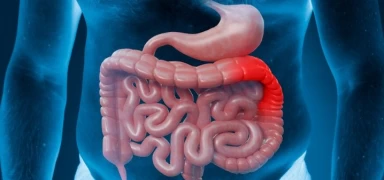
Stomach Ulcer: A Detailed Look from a Gastroenterologist's Perspective
- Stomach Ulcer: A Detailed Look from a Gastroenterologist's Perspective
- Factors Leading to Stomach Ulcers:
- Symptoms of Stomach Ulcers:
- Diagnosing Stomach Ulcers:
- Treatment Methods for Stomach Ulcers:
"They say the road to the heart passes through the stomach." Eating is one of our most fundamental needs and one of the simplest pleasures that enrich our lives. However, diseases affecting our digestive system can hinder our enjoyment of this basic need and make life unbearable. This article focuses on "stomach ulcers."
A stomach ulcer is one of the most common diseases of the digestive system. It refers to open sores that form in the stomach or the part of the small intestine known as the duodenum. These ulcers occur when the protective mucus layer of the stomach or duodenum is damaged. The most common causes of stomach ulcers include Helicobacter pylori (H. pylori) bacterial infection and long-term use of nonsteroidal anti-inflammatory drugs (NSAIDs).
Factors Leading to Stomach Ulcers:
- H. pylori: H. pylori is a bacterium that affects the inner lining of the stomach and the duodenum. This bacterium can enter the inner layers of the stomach wall by creating a protective coating that is not easily destroyed by stomach acid. This weakens the mucus layer, leading to the formation of ulcers when exposed to stomach acid and other digestive fluids.
- NSAIDs: NSAIDs are commonly used as pain and inflammation relievers. They work by blocking the production of chemicals called prostaglandins, which reduce pain and inflammation. However, prostaglandins also support the protective mucosa lining of the stomach. Prolonged use of NSAIDs can, therefore, cause damage to the mucosa and pave the way for ulcer formation.
Symptoms of Stomach Ulcers:
Stomach ulcers indicate the presence of open sores on the inner lining of the stomach or duodenum. The symptoms and signs of stomach ulcers can vary from person to person and depend on the location, size, and severity of the ulcers. Here are common symptoms of stomach ulcers:
- Upper Abdominal Pain: The most frequent symptom of stomach ulcers is upper abdominal pain. It is usually felt in the upper part of the stomach, below the chest bone, or around the navel. The pain can worsen on an empty stomach or after eating and may range from mild to severe.
- Heartburn: Some individuals with stomach ulcers may experience heartburn. Stomach acid flowing back into the esophagus causes a burning sensation.
- Indigestion: Stomach ulcers can interfere with the normal digestion of food, leading to feelings of indigestion.
- Belching: People with stomach ulcers may frequently experience belching and gas due to stomach acid reflux and gas formation.
- Loss of Appetite and Weight Loss: Stomach ulcers can cause loss of appetite and, consequently, weight loss due to decreased nutrient absorption and inadequate nutrition.
- Nausea and Vomiting: Stomach ulcers can lead to nausea and vomiting. In severe cases, vomiting may be accompanied by the presence of blood or a dark brown color, indicating bleeding.
- Black Stool: If there is bleeding from the ulcer, the stool may appear black or tarry due to the presence of digested blood.
The symptoms of stomach ulcers may not always be pronounced and can be mild or temporary in some individuals. Additionally, the symptoms of stomach ulcers can resemble those of other digestive disorders. Therefore, it is essential for individuals experiencing symptoms of stomach ulcers to seek evaluation and diagnosis by a gastroenterologist. As gastroenterology specialists, we can manage stomach ulcers effectively with early diagnosis and appropriate treatment, preventing complications.

Diagnosing Stomach Ulcers:
The diagnosis of stomach ulcers begins with evaluating the patient's symptoms and medical history. Subsequently, we confirm the presence of ulcers through an imaging test called gastroscopy. Gastroscopy involves using a flexible tube (endoscope) inserted through the mouth to visualize the inner lining of the stomach and duodenum.
Treatment Methods for Stomach Ulcers:
The treatment of stomach ulcers varies depending on the underlying cause. If an H. pylori infection is detected, appropriate antibiotic therapy is administered. Additionally, medications that reduce acid production or provide stomach protection are prescribed. These medications neutralize stomach acid or decrease its secretion, promoting ulcer healing.
Early diagnosis and appropriate treatment are crucial for managing stomach ulcers effectively. Lifestyle changes and dietary adjustments can also help reduce the risk of stomach ulcers. These changes may include regular eating habits, stress management, and avoiding smoking and alcohol consumption.
Remember, stomach ulcers are a serious health issue. If you experience symptoms of a stomach ulcer, seeking professional help from a gastroenterology specialist is vital. Gastroenterologists will guide you through the process of accurate diagnosis and treatment planning to ensure a healthy recovery.






